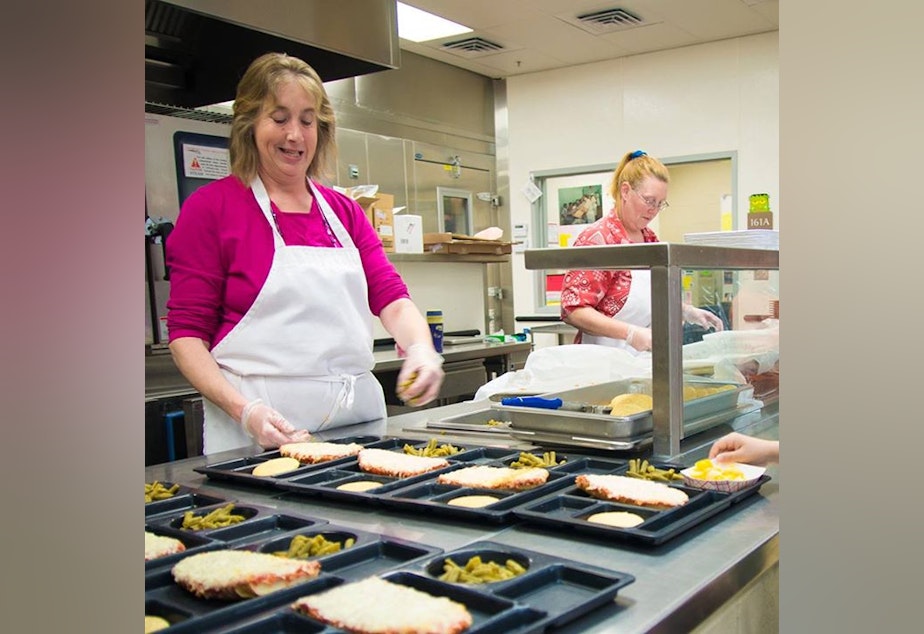'Breakfast After The Bell' Program Ensures Morning Meal For All Students

When you were a kid, your mom probably insisted you eat breakfast before school.
Studies show she was right; students who eat breakfast do better academically. Still, many kids go without – especially those living in poverty.
A study by the nonprofit Washington Appleseed found the state has some of the lowest breakfast participation rates in the country. The study found that fewer than half of all Washington students who qualify for free breakfasts start their days eating at school.
A new school breakfast strategy being rolled out in the Highline School District aims to address the issue.
Hassle In The Cafeteria
Sponsored
“When I know my stomach’s empty I stay quiet a lot because it really hurts,” said Celeste, 7, a first grader at Mount View Elementary in White Center.
Celeste’s bilingual school used to serve breakfast to low-income students in the cafeteria before school. But the school is trying something different.
Now, students go straight to their classrooms in the morning. They say the “Pledge of Allegiance” in English and Spanish and then every kid gets breakfast.
Celeste said she likes it better this way; eating before school in the cafeteria was a hassle. She gave a detailed run-down: “Get the food, then, when you’re done, throw away the trash. Then you’re going to have to clean the table, then you’re going to have to sit down, then you’re going to have to go over to the class, and it’s just – ugh. I don’t really like it.”
So how is it eating in the classroom now? On that point, she's adamant: “More relaxing!”
Sponsored
That’s the point, said Sarah Martin, who manages nutrition services for Highline School District.
Martin said when she visited schools that served free breakfast in the cafeteria, students would often not get to school in time to eat a full meal, so they would be rushed.
“They would have, in a lot of cases, less than five minutes to eat,” she said. "Sometimes they’d be turned away altogether. And it just broke my heart to see these students coming in and not have an opportunity to have a meal and start their day when I knew that they probably weren’t getting that at home.”
With grant money from Action for Healthy Kids and the state Dairy Products Commission, Martin found that the district could offer free breakfast to every child in three of the district’s high-poverty schools.
At Mount View, 83 percent of students qualify for free or reduced-price lunch.
Sponsored
Luggage Carts Of Food
Martin said moving breakfast from the cafeteria to the classroom did present some problems. “One logistical challenge was just figuring out how the heck are we going to get 700 breakfasts to the classrooms,” she said.
The answer was luggage carts with a box for cold food and a box for hot food. The school also had to add mid-week food deliveries because of limited refrigerator space. It switched from dishes like eggs and pancakes to pre-prepared foods like packaged cinnamon rolls and apple slices.
Teachers had a few worries of their own – like the prospect of dozens of milk and food containers sitting in the classroom garbage at room temperature all day. But in the end, principal Felecia Wells said there were solutions for these problems.
Now, more than 80 percent of Mount View students eat school breakfast every day – up from 30 percent when it was offered in the cafeteria.
Sponsored
“And that’s huge, in a school of 710 kids, to know that all of these students have the opportunity, if they’d like to, to eat breakfast," Wells said. "And if we really believe that kids do better during the school day on a full stomach, this was just a huge opportunity for us to take one barrier away, to know that that’s not going to be a problem. So it’s been wonderful.”
Washington Appleseed is now pushing for “breakfast after the bell” at schools around the state.

